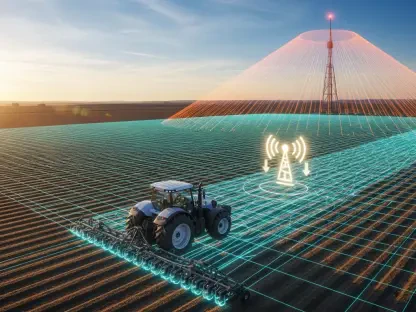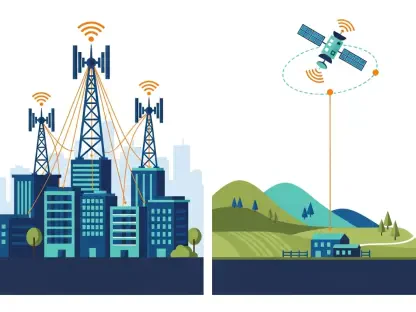In a rapidly evolving telecommunications landscape, Taara’s laser internet technology emerges as a groundbreaking solution that challenges established systems. Conceived by a company spun off from Alphabet, Google’s parent firm, Taara offers an innovative approach to delivering high-speed internet through laser beams instead of traditional fiber-optic cables or satellites. This cutting-edge technology promises data transmission rates of up to 20 gigabits per second over distances up to 20 kilometers, using devices called Lightbridges. By placing these devices strategically on rooftops or poles, Taara ensures an unobstructed line of sight, effectively circumventing the need for extensive fiber-optic infrastructure. The implications for remote areas and challenging terrains are profound, positioning Taara as a viable alternative to existing options.
Innovative Accessibility and Cost Effectiveness
Taara’s technology represents a transformative leap in internet accessibility, particularly due to its impressive cost-effectiveness compared to other systems. One of the most significant comparisons comes against Elon Musk’s Starlink, where Taara’s solution is reported to be 10 to 100 times faster while also being much less expensive. This dual advantage in speed and affordability makes it particularly attractive for areas where fiber-optic installation is either too costly or logistically unfeasible. In places like remote regions, valleys, or across rivers, the installation of Taara’s Lightbridges can bypass natural obstructions without difficulty, providing a stable and high-speed connection where traditional solutions would falter.
The promise of Taara’s laser internet has already been evidenced in trials conducted in Kinshasa and Nairobi, where the system showed remarkable performance. These trials have demonstrated the technology’s potential to significantly enhance connectivity for regions long underserved by conventional broadband services. This ability to deliver quick and cost-friendly internet access is crucial not just from a technical standpoint, but also for the societal benefits it entails in terms of education, business opportunities, and improved quality of life.
Miniaturization and Future Prospects
Looking towards the future, Taara envisions significant advancements in the technology driving its laser internet system. A major development anticipated by 2026 is the miniaturization of Lightbridge technology into fingertip-sized chips. This advance is expected to preserve the core functionality of the technology while facilitating easier and more widespread deployment. By offering a plug-and-play solution, these chips could accelerate the adoption of laser internet across a diverse range of settings, from residential to industrial areas, dramatically expanding its reach.
Founder Mahesh Krishnaswamy highlights Taara’s focus on addressing the last-mile connectivity challenges that many communities face, as opposed to the global coverage focus typical of satellite systems like Starlink. This approach specifically targets smaller, often neglected areas where traditional broadband is unavailable, thus bridging the digital divide that continues to leave three billion individuals without reliable internet access. By providing a sustainable, scalable solution tailored to local needs, Taara is particularly poised to drive significant change.
Transformative Impact on Connectivity
Taara’s vision for its laser internet technology marks a decisive shift in the approach to digital connectivity, moving away from a one-size-fits-all model. The broader implications of this shift are already being felt in sectors like education, healthcare, and commerce, where reliable internet access is increasingly essential. By democratizing high-speed internet, Taara’s laser technology not only fosters individual empowerment but also enhances community development by offering new opportunities for learning, healthcare access, and economic engagement.
This broader, inclusive vision of digital connectivity highlights the potential transformative impact of Taara’s innovative approach. As the digital landscape continues to evolve, the need for adaptable and scalable solutions like Taara’s laser internet becomes ever more critical in ensuring that no community is left behind. The shift from traditional infrastructure-heavy solutions to agile, laser-powered connectivity underscores a pivotal moment in the telecommunications industry, where speed, cost, and accessibility align to redefine what is possible.
Conclusion: Shaping the Future of Telecommunications
Taara’s technology is revolutionizing internet accessibility by being remarkably cost-effective compared to other systems. A significant point of comparison is Elon Musk’s Starlink. Reports suggest that Taara offers internet speeds 10 to 100 times faster while being considerably cheaper, creating a dual advantage that’s appealing for regions where fiber-optic installation is prohibitively expensive or practically impossible. For instance, in remote areas, valleys, or across water bodies, Taara’s Lightbridges overcome natural barriers effortlessly, ensuring a reliable and fast connection where traditional methods often fail.
Successful trials in cities like Kinshasa and Nairobi have already showcased Taara’s laser internet’s exceptional performance. These trials highlight its potential to transform connectivity in regions that have historically been neglected by standard broadband services. Offering fast and affordable internet isn’t just a technological breakthrough; it’s pivotal for society by unlocking educational prospects, expanding business possibilities, and enhancing overall quality of life for people in underserved communities.









